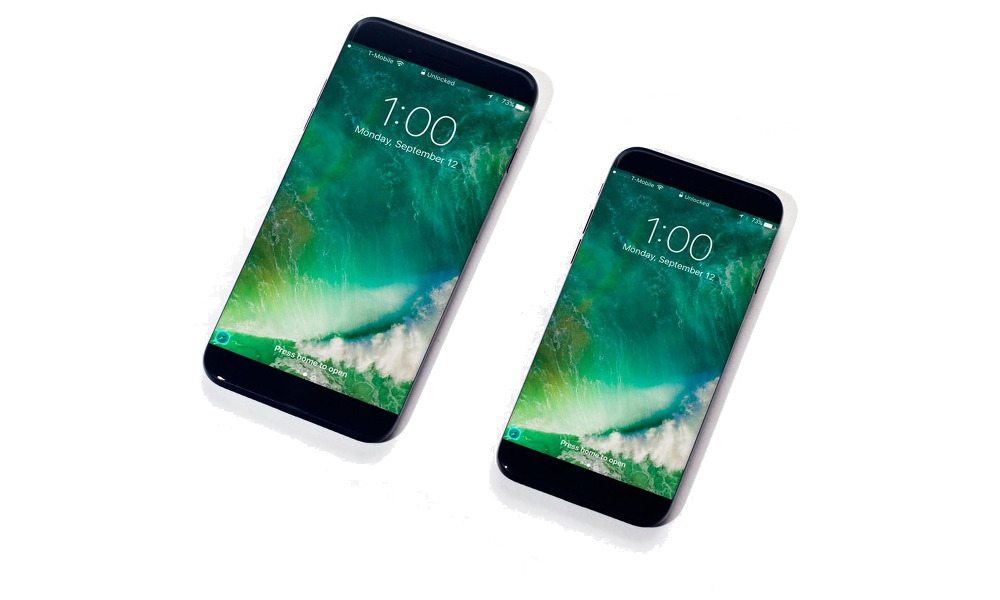Apple’s iPhone 8 Will Ditch the Home Button for Good, New Patent Suggests

Toggle Dark Mode
Apple was awarded a patent on Tuesday that might hint at technology rumored to appear on next year’s iPhone refresh.
The patent concerns the technology that would allow a fingerprint sensor to gather accurate readings through a structure like a smartphone screen, according to the U.S. Patent and Trademark Office.
The patent in question, No. 9,460,332, specifically describes a “capacitive fingerprint sensor including an electrostatic lens.” The technology seems to offer a solution to one of the biggest problems with an iPhone that lacks a home button, AppleInsider reported.
Unlike the iPhone 7, Cupertino’s 2017 flagship device will reportedly ditch the home button that has been iconic to the iPhone line since its 2008 debut. In its place, Apple is rumored to add an fingerprint sensor embedded directly beneath the screen — which is apparently going to be an edge-to-edge, flexible OLED display. This, of course, would mean that the front-facing camera would also be embedded beneath the phone’s screen, according to MacRumors.
Cupertino is apparently planning on doing away with a home button because it takes up “valuable surface space exclusively to a component that may only be used briefly in the process of identifying the user,” the patent reads.
But one of the main technological hurdles was the issue of integrating its Touch ID fingerprint technology beneath a screen. Normally, any separation between the surface where a user would place their finger and the actual sensor would cause a loss of resolution for the fingerprint images. Because of that, the resulting reading would be blurred and less accurate. Today’s patent seems to overcome that design problem with capacitive sensing technology that could work through gaps in space, AppleInsider reported.
The patent describes “electrostatic lenses,” which, in layman’s terms, is simply a group of patterned conductive layers. In a figure included with the patent, the position, relative voltage, and shape of these conductive layers could be altered to shape the electric field associated with a user’s fingerprint — and the information could be held “in the region between the contact surface of the capacitive fingerprint sensor and the array of capacitive sensing elements,” the patent reads. This would compensate for the blurring of the fingerprint images, resulting in more accurate readings.
AppleInsider notes that some form of this tech might actually be employed in today’s Touch ID technologies — but whether or not it actually is, is still unclear. Whatever the case may be, it does seem like the patent’s technology would go a long way to make an edge-to-edge screen iPhone possible. To add to that point, the patent even specifically mentions interrupting components “such as display stacks and touch screens” several times — hinting that the technology is chiefly meant to overcome the inaccuracies resulting from a fingerprint sensor embedded beneath a screen.
Cupertino has apparently been working on the patent for a couple years now, as it was first filed for in September 2014. Its inventor is credited as Jean-Marie Bussat, according to the U.S. Patent and Trademark Office.
Do you think Apple should stick with their iconic design?
Or is it time to ditch the home button for good?
Let us know in the comments below!
[The information provided in this article has NOT been confirmed by Apple and may be speculation. Provided details may not be factual. Take all rumors, tech or otherwise, with a grain of salt.]






